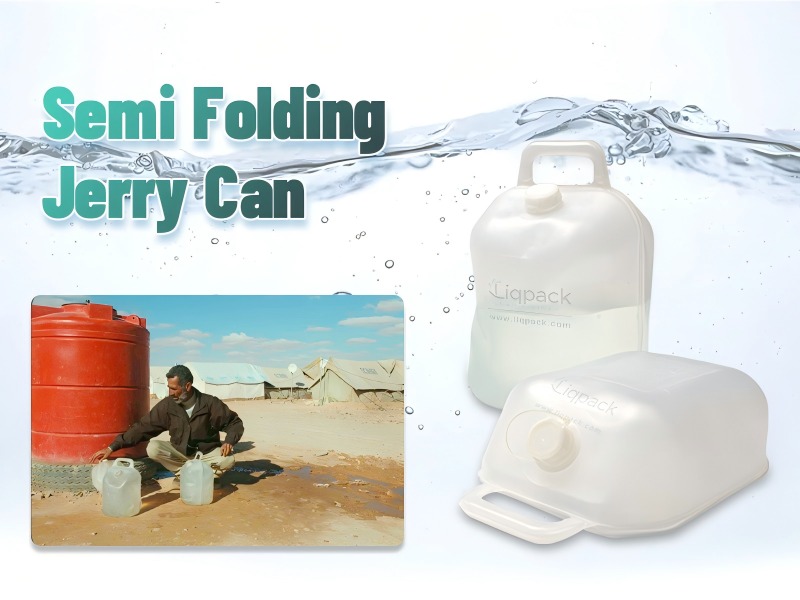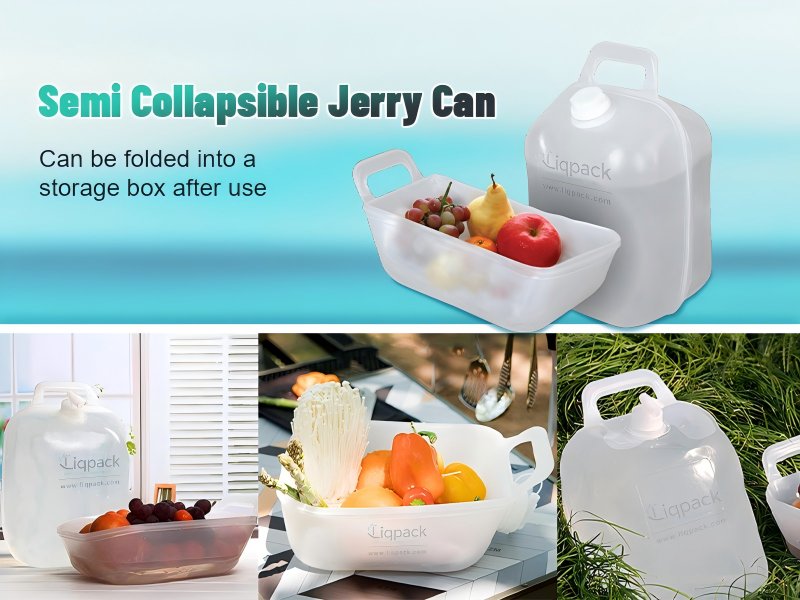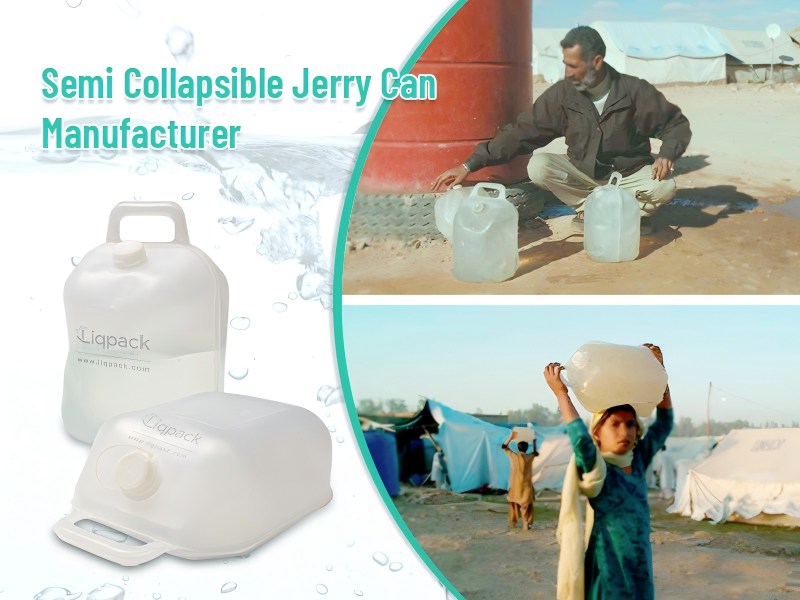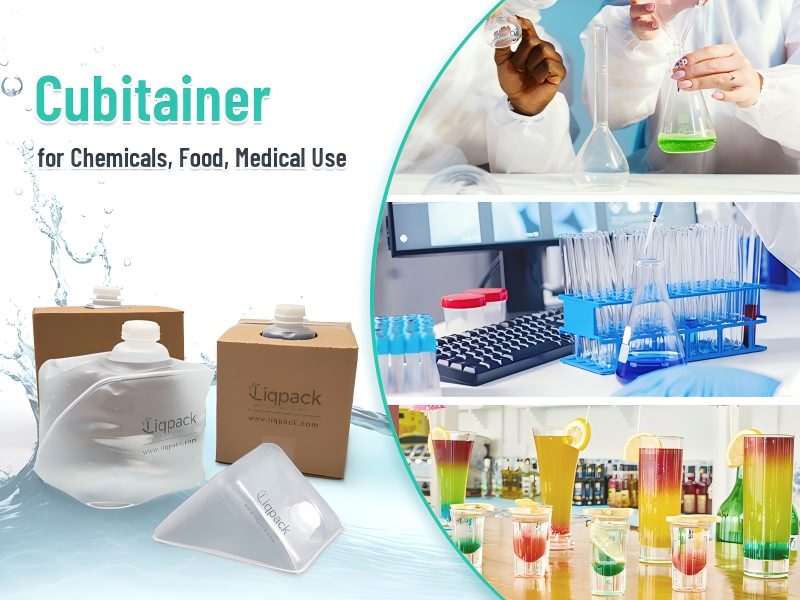
Cubitainers are a popular choice for safe, flexible, and cost-effective liquid packaging in the chemical, food, and medical industries. Choosing the right containers can impact safety, compliance, and quality. We hope this article will help you choose the cubic container that best meets your needs and ensures smooth operations.
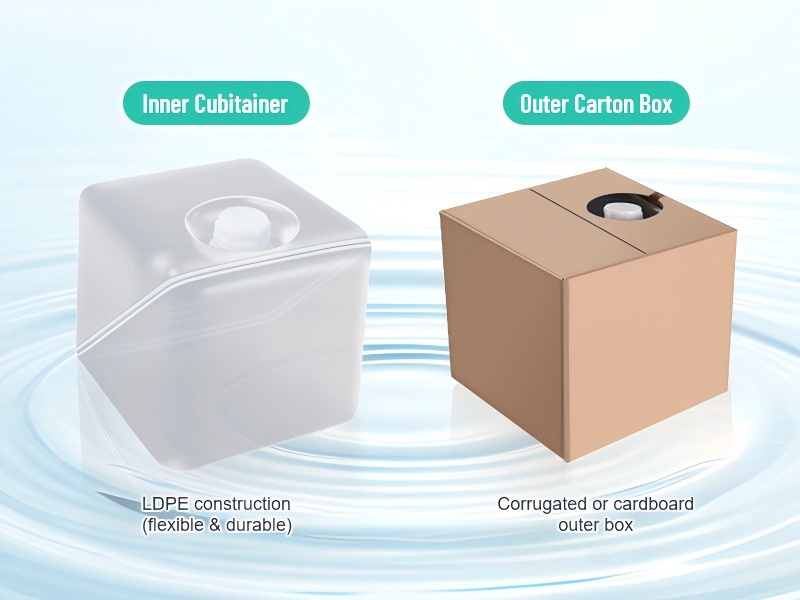
Understanding Cubitainer Basics
A cubitainer is a collapsible, cube-shaped container made from durable polyethylene materials. Designed to hold and dispense various liquids, these containers combine the flexibility of a bag with the structure of a rigid box. They take up minimal space, are portable, and are simple to store.
Cubitainers typically come with features such as tamper-evident caps, built-in handles, and customizable spouts. Their outer layer may be supported by a corrugated fiberboard box, adding protection during shipping.
Key advantages of cubitainers include:
- Reduced packaging waste due to collapsibility
- Space-efficient storage
- Versatile applications in the chemical, food, and medical industries
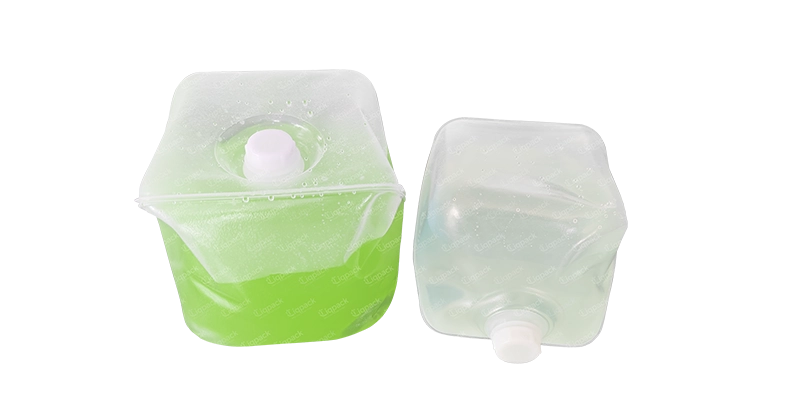
Key Factors to Consider When Choosing a Cubitainer
Material Compatibility
One of the most critical aspects is ensuring that the cubitainer material is compatible with your product.
- Chemicals: Choose cubitainers made from low-density polyethylene (LDPE) with high chemical resistance. Verify that the container won’t degrade or leach when in contact with acids, alkalis, or solvents.
- Food: Ensure the cubitainer is BPA-free, FDA-compliant, and manufactured using food-grade plastic. This guarantees that no harmful substances will migrate into the food contents.
- Medical: Select containers that meet USP Class VI or ISO 10993 standards for biocompatibility, ensuring they’re safe for contact with sterile or sensitive fluids like saline or disinfectants.
Capacity and Size Requirements
Cubitainers are available in a wide range of sizes—commonly 5L, 10L, 18L, and 20L.
- For laboratory or clinical use, small-volume containers (1–5 liters) are often sufficient.
- For foodservice or chemical manufacturing, larger volumes (10–20 liters) may be ideal for bulk handling.
Choose a size that balances usability, space efficiency, and your desired dispensing volume.
Lid, Cap, and Spout Configurations
Different industries require different dispensing options:
- Chemical cubitainers benefit from tamper-evident screw caps or threaded nozzles that reduce spillage and allow for safe handling.
- Food cubitainers may feature snap-on caps, spigots, or controlled-flow valves for easy, hygienic dispensing.
- Medical cubitainers often come with luer-lock fittings or sterilizable closures compatible with infusion systems.
Choose a closure system that enhances safety and suits your specific dispensing method.
Barrier Properties
Some liquids, especially in the food and medical sectors, are sensitive to oxygen, moisture, or light.
- Oxygen Barrier Films help preserve freshness and extend shelf life for juices, syrups, or nutraceutical liquids.
- UV-resistant cubitainers protect light-sensitive chemicals or medications from photodegradation.
- Multi-layer construction may be required for high-barrier protection in pharma and food applications.
Ensure the container’s barrier performance aligns with your product’s stability requirements.
Storage and Transportation Requirements
Transportation and storage logistics can make or break your packaging choice.
- Collapsible cubitainers reduce freight costs and storage footprint when empty.
- Containers with outer corrugated boxes offer extra protection during transport.
- Ensure the cubitainer is stackable and impact-resistant for warehouse and supply chain handling.
Opt for designs that balance durability and compactness, especially if products are exported or shipped long distances.
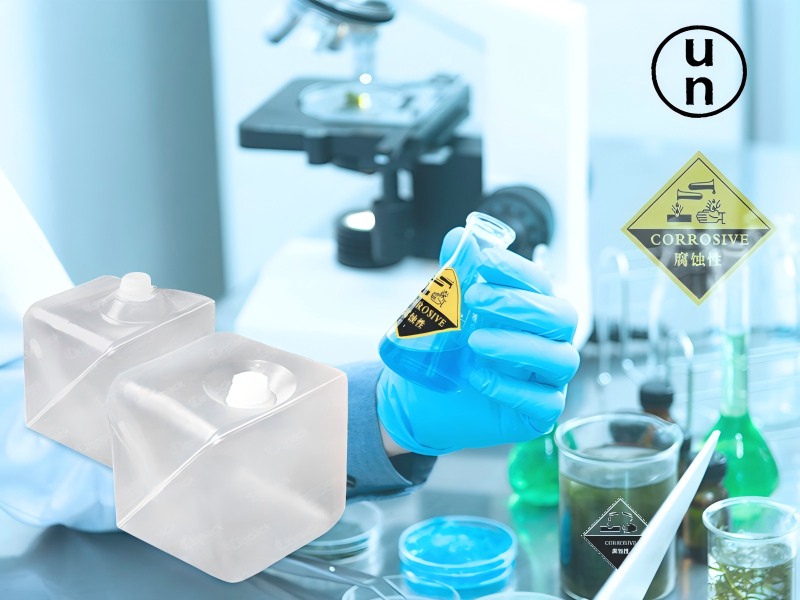
Choosing Cubitainers for Chemical Use
Chemical applications demand rigorous safety and compatibility. Here’s what to look for:
Chemical Resistance
Select cubitainers certified to hold industrial liquids like sodium hypochlorite, hydrochloric acid, or solvents. HDPE cubitainers usually provide high resistance to aggressive chemicals. Cross-check the chemical compatibility chart provided by the manufacturer.
Leak and Spill Prevention
Choose designs with reinforced seams, secure caps, and drip-free spouts. For hazardous chemicals, features like tamper-evident seals or secondary containment options are recommended.
Regulatory Compliance
Look for GHS-compliant labeling, UN/DOT certification for transport, and REACH/CLP conformity if operating in the EU.
Choosing Cubitainers for Food Use
Food-grade cubitainers must adhere to stringent hygiene and quality standards.
FDA and EU Compliance
Ensure the container material is FDA 21 CFR 177.1520 or EU 10/2011 compliant for food contact. Check for BPA-free and phthalate-free labeling.
Preservation of Taste and Odor
Cubitainers used for items like edible oil, wine, or syrup must maintain product integrity without imparting odors or aftertastes. Multi-layer constructions with neutral inner linings are ideal.
Easy Dispensing and Hygiene
Select cubitainers with integrated spouts, anti-drip valves, or dispensing pumps that allow users to pour without touching the product, minimizing contamination.
Common food applications include:
- Concentrated sauces
- Beverages (juices, wine)
- Dairy additives
- Liquid sweeteners
Choosing Cubitainers for Medical Use
Medical and pharmaceutical cubitainers must meet the highest levels of cleanliness and precision.
Sterility and Biocompatibility
Look for containers manufactured in cleanroom environments and certified pyrogen-free, latex-free, and compliant with USP Class VI or ISO 13485.
Safe and Secure Dispensing
Cubitainers used for IV fluids, antiseptics, or reagents should come with leak-proof, sterile closures and disposable dispensing kits.
Special Packaging Options
In pharmaceutical logistics, cubitainers may require:
- Gamma or ethylene oxide sterilization compatibility
- Double-bagging for cleanroom transfer
- Lot traceability for pharmaceutical quality control
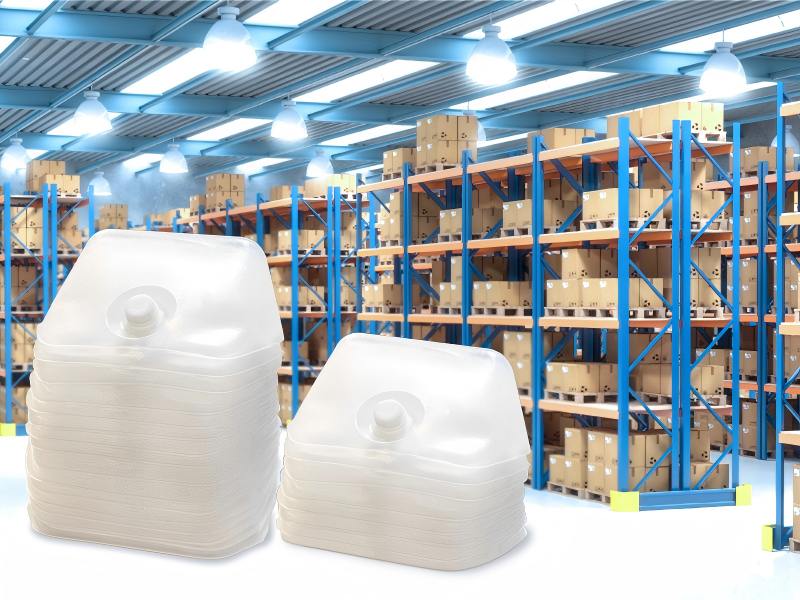
Common Mistakes to Avoid
While cubitainers are versatile, improper selection can lead to costly errors.
Ignoring Compatibility
Using a food-grade cubitainer for corrosive chemicals may result in container failure. Always verify chemical compatibility and usage certification.
Choosing Non-Compliant Containers
Some suppliers offer cheaper products without food, medical, or chemical certifications. Don’t sacrifice safety or legality to save costs.
Overlooking Closure Designs
Improper spouts or caps can lead to leakage, spoilage, or product wastage. Choose a closure that matches your dispensing and sealing requirements.
Improper Storage Post-Use
Storing used cubitainers with residual liquid can lead to contamination or breakdown. Always clean, dry, and store them as per best practices.
Choosing the right containers for your application industry ensures safety, compliance, and efficiency. Collaborate with us to receive the best solution for your product, support, and customization.
- Liqpack

